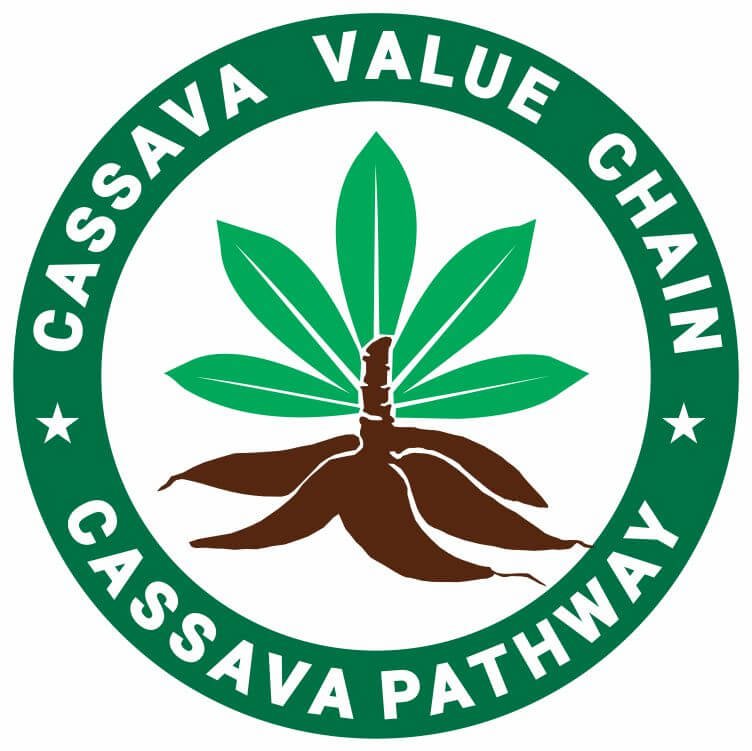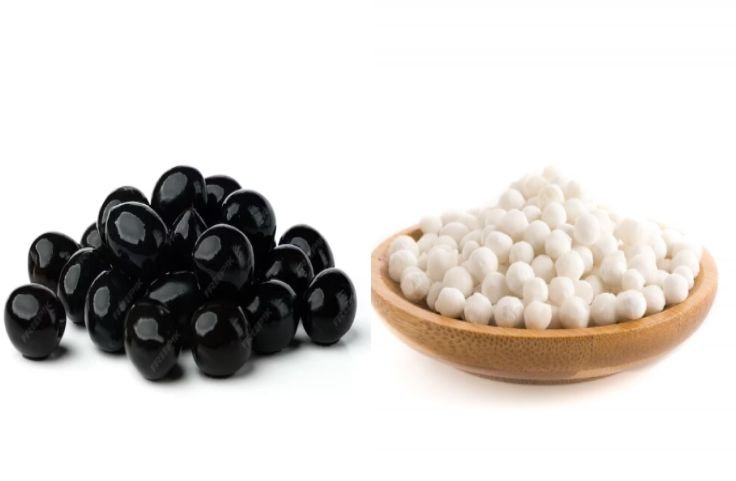Are tapioca pearls gluten free, or could they be hiding something unexpected in your diet? Here’s what you should check before adding them to your next gluten-free recipe.
In today’s food culture, gluten-free options have become more than just a trend; they are a necessity for many.
With rising cases of gluten sensitivities and celiac disease, consumers are turning toward safe alternatives that do not compromise taste or texture.
Among these alternatives, tapioca pearls have emerged as a popular choice.
Made from tapioca starch derived from cassava root, these chewy pearls are most famous in bubble tea but also feature in puddings, desserts, and savory dishes.
Their growing demand raises an important question: are tapioca pearls truly gluten-free?
For individuals who must carefully monitor their diets, understanding their composition is crucial.
This discussion explores whether tapioca pearls fit into gluten-free lifestyles while offering delicious versatility.
Recommended: Types of Tapioca Pearls
What Makes a Food Gluten Free?
Gluten-free food excludes wheat, barley, and rye. If you live with celiac disease or gluten sensitivity, avoiding gluten protects your health.
Knowing what makes a food gluten-free helps you choose wisely, prevent discomfort, and still enjoy delicious, safe meals daily.
Gluten: The Protein to Avoid
Gluten is a protein in wheat, barley, and rye. It gives dough elasticity but harms sensitive individuals.
For people with celiac disease, it damages the intestines. Even without celiac, gluten sensitivity can cause bloating, headaches, and fatigue.
Strict avoidance is necessary for well-being.
Gluten-Free Grains and Safe Choices
You still have many options when avoiding gluten. Grains like rice, corn, quinoa, and buckwheat are naturally gluten-free.
These provide tasty, versatile choices for breads, pastas, and snacks.
Always check product labels carefully to ensure no hidden gluten ingredients sneak into your meals.
The Risk of Cross Contamination
Even gluten-free foods may become unsafe through cross-contamination.
Using shared tools, cooking oil, or cutting boards can transfer gluten particles.
For those with strict gluten-free needs, this risk is serious.
Keeping utensils, cookware, and preparation areas separate helps keep meals completely safe.
Related Posts
Tapioca Pearls Recipes Beyond Bubble Tea
How to Make the Brazilian Tapioca Crepes
How to Make Boba Pearls Without Tapioca Starch
Instant Tapioca Pearls: Your Go-To for Speedy Treats
Indian Tapioca Sabudana Recipe
How to Make Tapioca Tortillas the Easy Way
How to Make Brazilian Tapioca Crepes: Step-By-Step Guide
Are Tapioca Pearls Gluten Free Naturally?
Yes! Tapioca pearls are naturally gluten-free, as they are made from cassava root, a starchy tuber free of gluten proteins found in wheat, barley, and rye.
This makes them a safe choice for people with gluten intolerance or celiac disease.
Their gluten-free status is especially important for those adhering to strict diets while still wanting variety and enjoyment in their meals.
Tapioca pearls are widely used in bubble tea, puddings, and other desserts, showcasing their versatility across cuisines.
However, caution is necessary with flavored or pre-packaged versions, as additives or cross-contamination may introduce gluten.
Pure, authentic tapioca pearls remain a reliable gluten-free option.
Their adaptability in sweet and savory recipes further enhances their appeal for diverse diets.
Ultimately, tapioca pearls stand out as both safe and enjoyable, offering gluten-sensitive individuals a delicious way to partake in popular culinary trends without health risks.
Related: Small Tapioca Pearls
When Tapioca Pearls Might Contain Gluten
The main risk is cross-contamination in factories that also process wheat or other gluten grains, which poses dangers for people with celiac disease or gluten sensitivity.
Flavored, instant, or processed tapioca pearls may also include gluten-containing additives like thickeners or wheat-based flavorings.
Even preparation methods can introduce gluten if pearls are cooked with gluten-rich items.
To stay safe, buyers should look for certified gluten-free labels and carefully check product ingredient lists.
Products made purely from cassava starch are safest, while commercially processed “boba” or instant pearls may carry higher risks.
In short, tapioca pearls themselves are gluten-free, but choosing the right brand and preparation method is key to avoiding gluten exposure for those on gluten-free diets.
Related: Large Tapioca Pearls
How to Identify Gluten Free Tapioca Pearls
If you want to enjoy bubble tea or desserts without worrying about gluten, knowing how to choose the right tapioca pearls is important.
Here’s how you can make safe and informed choices.
Check Ingredient Labels Carefully
Start by reading every ingredient on the package. Pure tapioca pearls should list tapioca starch from cassava root as the main ingredient.
Watch out for flavorings, colorings, or thickeners, as some may include wheat-based additives that introduce gluten.
Careful label checks protect your diet.
Look for Certified Gluten Free Labels
Certification gives you confidence that tapioca pearls meet strict gluten-free standards.
When you see this label, it means the product has been tested for safety, and the risk of cross-contamination is low.
Always choose brands that prioritize certified gluten-free production.
Related: Best Tapioca Pearls for Pudding
Research Reliable Gluten Free Brands
Not every brand guarantees gluten-free tapioca pearls, so researching trusted names makes your choice easier.
Brands like Bob’s Red Mill and Pulsar are known for gluten-free standards.
Local Asian markets may also carry smaller, reliable brands worth trying.
Learn From Gluten Free Communities
Joining online gluten-free forums or groups can guide you toward trusted tapioca pearl brands.
People share real experiences with products, helping you avoid trial-and-error.
When testing a new brand, buy a small pack first to confirm it works for you.
Related: Recipes from Tapioca Pearls
Are Tapioca Pearls Safe for a Gluten Free Diet?
Tapioca pearls, made from cassava root, are naturally gluten-free and safe for people with celiac disease or gluten sensitivity.
However, cross-contamination may occur if processed in facilities handling gluten products.
To avoid risks, it’s best to choose certified gluten-free brands, which meet strict safety standards.
Tapioca pearls are versatile, enhancing both sweet and savory gluten-free recipes.
They add a unique chewy texture to dishes like bubble tea, tapioca pudding, fruit salads, and smoothies.
Their adaptability makes them a popular ingredient for those following a gluten-free diet, offering both flavor and variety.
By selecting trusted products, tapioca pearls can be enjoyed confidently without compromising health.
Their texture and culinary flexibility not only satisfy cravings but also provide creative options, making them an excellent addition to a balanced gluten-free lifestyle.
Conclusion
In summary, tapioca pearls are naturally gluten-free, making them a safe and versatile choice for people with gluten intolerance or celiac disease.
Since they are derived from cassava root, they do not contain gluten by default.
Their unique chewy texture makes them popular in bubble tea, desserts, and savory dishes.
However, cross-contamination is possible during processing, so it’s crucial to check labels carefully and choose certified gluten-free brands when needed.
By sourcing wisely, individuals can confidently enjoy tapioca pearls while maintaining dietary safety.
Beyond their safety, they also add variety and creativity to gluten-free cooking, offering both enjoyment and new culinary possibilities.
Frequently Asked Questions
Are tapioca pearls gluten-free?
Yes, tapioca pearls are naturally gluten-free since they come from cassava starch. Always check packaging to ensure no gluten-containing additives or cross-contamination during processing.
Can I use tapioca pearls in gluten-free baking?
Yes, tapioca pearls work well in gluten-free baking. Combine them with other gluten-free flours to achieve better consistency, texture, and flavor in recipes.
What should I watch out for?
Always check for gluten-free certification when buying tapioca pearls. Some brands risk cross-contamination or use flavorings and additives that might contain gluten.
How do I incorporate tapioca pearls into a gluten-free diet?
Cook tapioca pearls and enjoy them in smoothies, puddings, desserts, or savory dishes. They’re versatile, fun, and complement many gluten-free meals when eaten moderately.
References

Chimeremeze Emeh is a writer and researcher passionate about Africa’s most transformative root crop—cassava. Through his work at cassavavaluechain.com, he explores the entire cassava industry, from cultivation and processing to its diverse applications in food, health, and industrial use.
He also writes for palmoilpalm.com, where he shares his extensive experience and deep-rooted knowledge of palm oil, covering red palm oil, palm kernel oil, and refined products. His work there reflects his lifelong connection to agriculture and his commitment to promoting sustainable value chains in Africa.
Driven by curiosity and purpose, Chimeremeze aims to shed light on how cassava continues to empower communities, strengthen food systems, and link traditional farming wisdom with modern innovation.

